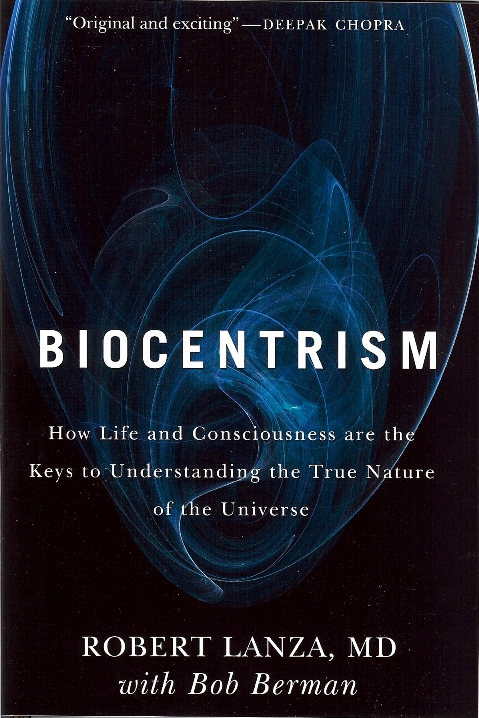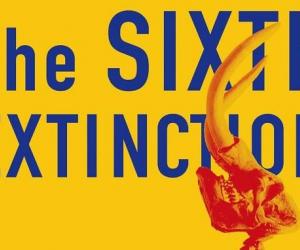These Weddell Seals create a wild and bizarre range of sounds! I think some of it has to do with the ice, because if you search for videos of people throwing stones on frozen lakes you can hear one of the tones when the rock strikes the ice.
Category: animals (Page 1 of 4)
I learned of Jeremy Narby’s book Cosmic Serpent: DNA and the Origins of Knowledge while reading Graham Hancock’s book, Supernatural. The ideas present within both books are incredible. DNA may be an extra-terrestrial biotechnology. Of course, you don’t have to read these books to come to that conclusion. Narby further suggests that DNA actually has a mysterious way to communicate with the conscious awareness of all life, especially after the consumption of various consciousness altering molecules. It is through this alteration of the brain that life is able to receive a mysterious informational signal from DNA. Even if his hypothesis turns out to be false, the sheer intellectual creativity of Narby’s work deserves praise. As wild as that sounds, it really would not be surprising given the complexity and probability arguments presented by the panspermia supporters (Francis Crick for instance and also see: The “Wow! signal” of the terrestrial genetic code.
A big reason why it is so hard to fix and respond to environmental crises is the fact that societies lack a means to store ecological value in a monetary form. As a result, in the never-ending pursuit of growth and technological progress we rarely consider the growth and progress of other species. But how can we? Population statistics, ecological value, and other detailed data are rare or non-existent. We have very little quantitative data on the thousands of other species. And we don’t care. The average citizen can barely find time to consider the fate of the Rhino when he/she works 10 hours a day. We are stuck in fifth gear — moving full speed into the future despite the dire consequences of ignorance and a failure to act. The current relationship between humanity and the biosphere is reminiscent of parasitism or cancer. I just hope we are not yet in stage 4. Despite the reliance of our survival on other species, we continually threaten their existence — and indirectly our own.
The solution to the impending crises lies in a change of perception. The often quoted “survival of the fittest” ideology tends to cause people to forget about another important form of evolution — symbiosis. Cancer is the extreme version of “survival of the fittest” and parasitism at the cellular level. Cooperation through symbiosis however, is working together to get the job done (mitochrondria and the endosymbiotic theory). If we change the way we view nature, from “Man versus Nature” to “Man with Nature,” our problems will begin to vanish. The conception of the future will turn from a dismal apocalyptic world to one of harmonious mutualism. A symbiotic biological cooperation between our species and the other species of Earth, who are at our mercy, will forever change the course of history. The importance of symbiosis is becoming increasingly clear as a powerful survival mechanism in biological evolution and the future of homo sapiens may depend on its acceptance.
Brainstorming ways to establish a framework which intimately connects the economics of humans with that of their relatives in a symbiotic relationship, I believe one solution could be via the market. It involves creating a new asset class. By establishing shares of stock in species (or family/order) and having these shares trade in an exchange, the success of other species now becomes a potentially profitable industry for humans. At the same time benefiting the non-human species. Similar to humans trading shares of stock with theoretical values based on the work potential of organizations of labor producing members, the trading of species shares would be based upon the ecological value of biological organisms.
This Species Xchange would provide a means to store human labor potential (money) in the data collection, protection, monitoring, preservation, and development of any number of species. This funding would be initiated through an IPO for each species. I believe this would be symbiosis at its finest. Including other species in our financial decision making would fundamentally change the relationship humans have with their biological relatives. By protecting the species humans rely on for ecological harmony, while at the same time providing them with a more “bio-diverse” basket of eggs to store their labor potential would, in effect, create a more dynamic and powerful investment system.
The money raised in the IPO would go towards all manner of initiatives to fund and support the species. It would be managed by a group of people in a primus inter pares form of management. The goal of management would be to spend the money in such a way as to increase the value of the species in relation to all other species. This could include population measurement and control, biological research on the life cycle of the species, detailed studies on the role in the overall ecological network, etc…
For example, let’s say 100 million shares of Macropus Rufus are issued to the public. The IPO is priced at $20 per share. Thus, proceeds of $2 billion would go towards a fund established for the Macropus Rufus species. At the end of each quarter, a species report would be released detailing any changes in population, biological discoveries, and other details related to the status of the species. After each report, a new guaranteed price would be established by a set formula. Let’s say that new price is $22.50. Fast-forward through time and imagine a set of guaranteed prices: $22.50, $22.80, $21.00, $22.10, $25.00, etc… The set of guaranteed prices would form a set of lower bounds for the price series. The only reason an investor would redeem the shares would be in the event of an arbitrage if the price fell below the lower bound. However, it remains to be determined whether this would actually happen.
Perhaps all this seems silly, like something out of science fiction, and not feasible. Even though I would disagree, I think it is at least a step in the right direction. If more people can brainstorm practical ideas which join together humans and other species in a symbiotic relationship with current institutions, we may have a chance at preventing a catastrophic change in the biosphere. Harmony and balance can be restored with the right combination of creativity and institutional power.

I recently finished Robert Lanza’s book, Biocentrism: How Life and Consciousness are the Keys to Understanding the True Nature of the Universe. While understanding the true nature of the universe is a bold claim, I think there is validity to the perspective of biocentrism based on my own experiences and knowledge. The book kept me thinking and my head spinning. My mind constantly wondered, thinking about the consequences and possible applications of the principles of biocentrism.
Lanza’s theory of biocentrism has seven principles (source):
- What we perceive as reality is a process that involves our consciousness. An “external” reality, if it existed, would by definition have to exist in space. But this is meaningless, because space and time are not absolute realities but rather tools of the human and animal mind.
- Our external and internal perceptions are inextricably intertwined. They are different sides of the same coin and cannot be divorced from one another.
- The behavior of subatomic particles, indeed all particles and objects, is inextricably linked to the presence of an observer. Without the presence of a conscious observer, they at best exist in an undetermined state of probability waves.
- Without consciousness, “matter” dwells in an undetermined state of probability. Any universe that could have preceded consciousness only existed in a probability state.
- The structure of the universe is explainable only through biocentrism. The universe is fine-tuned for life, which makes perfect sense as life creates the universe, not the other way around. The “universe” is simply the complete spatio-temporal logic of the self.
- Time does not have a real existence outside of animal-sense perception. It is the process by which we perceive changes in the universe.
- Space, like time, is not an object or a thing. Space is another form of our animal understanding and does not have an independent reality. We carry space and time around with us like turtles with shells. Thus, there is no absolute self-existing matrix in which physical events occur independent of life.

The information contained in Elizabeth Kolbert’s book, The Sixth Extinction: An Unnatural History, should concern all humans alive today. The facts presented have been known to the scientific community for a number of years. Its message is clear and important: the human species has been the chief cause of a massive extinction not seen since the dinosaurs perished. Biological diversity has been decreasing for a long time. She presents the facts in a clear and fascinating story; visiting numerous places around the globe and witnessing first hand the effects of “The New Pangea.” The Washington Post’s review of Kolbert’s book.





